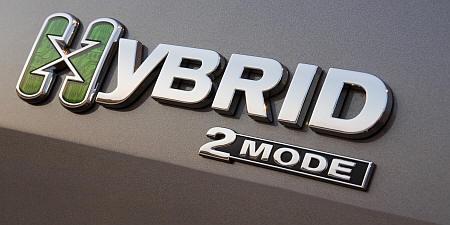Introducing the Winlink Hybrid Network

With the release of RMS Relay version 3.0.0.0 on November 4, 2013, the Amateur Radio Safety Foundation introduced the Winlink Hybrid Radio Email Network. This new network design marks a major milestone in Winlink's evolution with higher reliability, performance and utility for emergency communications. The new generation Winlink system now conforms to government-user's requests for radio-only message transfer without the use of the internet. Hybrid Network capabilities are available to both amateurs on the ham bands and to DHS NCC SHARES licensed operators on government frequencies. The new network is deployed by SHARES, who actively and regularly exercises it's capabilities. The Winlink Development Team urges HF sysops to upgrade their RMS station software (see below) to become fully functional in the new system. Including RMS Relay in a gateway's configuration improves the station's reliability for users.
The new design combines the best of Winlink's traditional internet RMS-CMS forwarding system and the fault-proof features of a completely stand-alone, radio-only message forwarding system. The new design takes advantage of the speed and other benefits of the Internet when and where it’s available, but also provides end-to-end email transport and delivery if the Internet is down--or even if it completely disappears everywhere. It does this transparently, and routes messages automatically from sender to recipient without much adaptation by users, except that they must use a client program that supports the new design (currently only Winlink Express). Older programs like Airmail still are compatible with the system and hybrid gateways without compromise to past performance or capability, but can't take advantage of the new network's features. Users can switch to RMS Express to gain the advantages of the Hybrid Network design.
The new design is the work of Phil Sherrod, W4PHS, along with the support of WDT developers, a crowd of Winlink users and both ham and MARS sysops. Phil designed, coded and tested new versions of RMS Relay and RMS Express, where most changes have been made. The new system has been in intensive development and testing among 43 RMS stations since January 2013.
Overview for Winlink Sysops
"The Hybrid Network" is our term for the subset of RMS gateways that support HF forwarding. Among these gateways, RMS gateways remain connected to the Internet while it’s available, and a client connecting to the RMS is piped directly to a CMS just like as normal RMS works. However, if a connection comes in from another RMS that is relaying radio-only traffic, the receiving RMS handles the message processing itself rather than passing it through the Internet to the CMS. Incoming messages are stored in a local database, like it has when RMS Relay is configured for 'Local Database' operating mode.
Once the connection from the calling RMS is finished, the receiving RMS examines the incoming message(s) and does two things: If it’s got an Internet connection, it checks to see if a copy of the message has been sent to a CMS. If its not on a CMS, it sends the messages to a CMS. Next, it queues the message to be forwarded to the next RMS using a calculated path to the destination Message Pickup Station (MPS). What is an MPS? It is one, two, or three RMS gateways that a user chooses to use for routine radio-forwarded message pickups. These will be the gateways the user feels he can most reliably connect to by radio. Users must select these MPS from those available using a setup tool in RMS Express. The optimum path for message relaying is calculated at each RMS along the way. The forwarding network is much like a mesh network, self-healing, smart, and able to adapt to physical conditions and stations joining and leaving the network.
When the RMS isn’t busy receiving an incoming user call or forwarding messages, it resumes its normal operation, with connection to the Internet. All radio message forwarding is on HF frequencies, by hybrid gateways running the RMS Trimode program. The beauty of this is that all HF RMS can be configured to run this way; we don’t have to require stations to dedicate themselves to be radio-only relay stations. They can function the normal way 99% of the time but can also forward HF traffic if it comes in.
Hybrid RMS Gateway Requirements
- If you operate an HF RMS gateway it must be equipped with a Pactor level 2, 3 or 4 modem to participate in the hybrid network. Note that the Pactor modem is not dedicated to message forwarding; it also is used to receive connections from client stations. SCS Dragon users, check that your Dragon modem contains the firmware 1.17.8 or higher. If it does not, then go to the ftp://autoupdate.winlink.org site and download newer firmware, the SCSUpdate.zip file, and run the program from it to install the new firmware.
- Pactor 4 is used by SHARES only. It is not permitted on the amateur radio bands.
- You must run RMS Trimode software to control the radio and TNC. Third-party software is not supported.
- The callsign of your station must not be longer than 6 characters, and it must not contain a SSID extension (i.e., “-nn”).
While only Pactor modes are used for their high efficiency when forwarding traffic between RMS gateways, all Pactor, WINMOR, or Robust Packet modes can be used by users to connect to the same RMS. And users may also use VHF Packet connections if RMS Packet software is installed on the gateway computer, and HAMNET (WiFi or HSMM), D-Star, and other high-speed digital user connections are supported via RMS Relay's telnet server.
FCC Rules and a Limitation for US Hams operating Gateways
The Winlink Hybrid network automatically forwards messages from RMS to RMS on HF frequencies. Minimal network infrastructure and station redundancy is what makes the system dependable in disaster conditions. The long reach of HF makes this practical using relatively few relay stations across a continent. The fastest delivery speed and the best radio paths are calculated by each RMS as a message is passed along. Automation optimizes delivery times, and the system fully delivers automation to that end.
The FCC amateur rules in the US confine automatic stations to very narrow shared sub bands that are already congested with RMSs serving essential safety traffic for marine and emergency users, and we share these sub bands with many other services. For US amateurs running a hybrid gateway you need to be careful of the portion of the band you are set to transmit in, Pactor 2 or 3 need to be in the proper segments. RMS Relay has set up menus to help you control what you transmit, it is your responsibility to be aware of the limitations and apply them.
Radio-Only Hybrid Network Gateways
Due to policy or physical location some sysops wish to run their RMS gateway permanently disconnected from the Internet. These stations can function as relay stations in the radio-forwarding network, and can send and receive user traffic as an MPS. They simply must rely upon the next internet-connected RMS in the network to pass messages to or from a CMS as they can not do that directly. If configured to work disconnected from the internet, the station stays in touch and gets the network information it needs by sending and receiving special short service messages.
Participating in the Winlink Hybrid Network
For Users and Sysops:
RMS Express: On the computers you use to connect to hybrid RMS gateways, make sure you’re using version 1.2.15.0 or later. RMS Express does not have to be installed on the RMS gateway computer.
For Sysops only:
RMS Relay uses the RMS Trimode package to receive incoming calls and also to handle message forwarding by radio. It uses the VOACAP program to compute propagation forecasts that help determine the optimum route for messages being forwarded via radio. Normally, RMS Trimode is already installed at most gateways that support Pactor and VOACAP is installed at sites that use RMS Express with HF. However, if these programs are not already installed on your RMS gateway's computer, you should install and configure them before attempting to run the new version of RMS Relay.
- RMS Trimode: Make sure Trimode has autoupdated itself to the current released version (1.2.4.7 or later).
- VOACAP: VOACAP is the propagation prediction program used by both RMS Express and RMS Relay to compute the predicted propagation path between two stations. If you don’t have it installed, use this URL to download the installation program:
ftp://autoupdate.winlink.org/User%20Programs/itshfbc_120722.zip - RMS Relay: If you have not already installed RMS Relay, download it from the Winlink FTP site.
If you already have RMS Relay installed, use the normal autoupdate procedure (see your program help file).
Configuration, Instructions, and Support
For details on configuring your hybrid gateway software, and for how-to instructions, consult the program help files. You also may find Phil's tutorial for sysops helpful.
In addition, Phil has produced a presentation that explains how the hybrid system works.
For direct help and support, contact:
Phil Sherrod
[email protected]
615-347-6430
Steve Waterman
[email protected]
615-300-5296
Also contact Steve for information about joining SHARES.
